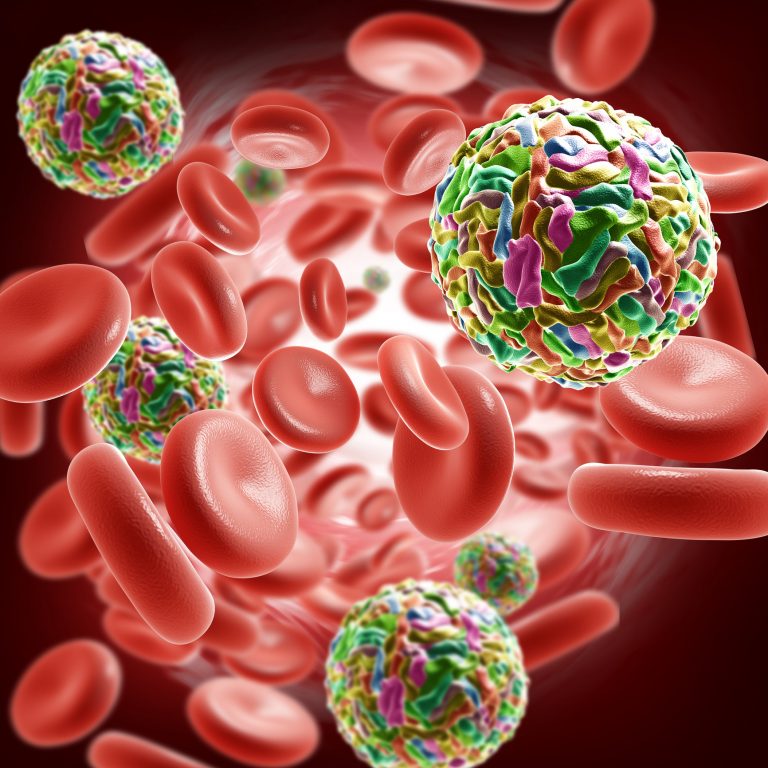
Snippets of DNA folded to form a five-pointed star can trap Dengue virus in the bloodstream, researchers from the Rensselaer Polytechnic Institute report. The trap lights up once it catches the virus, is non-toxic, and is naturally cleared from the body. The researchers say this approach, which is based on structural DNA nanotechnology, could be effective against many different viruses because like Dengue, all other viruses must first attach to the cell wall to infect their host.
“We show that this structure is a potent viral inhibitor and that it can act as a sensor by including a fluorescent output to report binding,” the authors write. “Our molecular-platform design strategy could be adapted to detect and combat other disease-causing pathogens by generating the requisite ligand patterns on customized DNA nanoarchitectures.” The study’s lead author was Paul S. Kwon and it was published this week in Nature Chemistry.
Dengue is a mosquito-borne virus that can cause serious illness and death and whose prevalence is rising dramatically around the world, according to the World Health Organization. About half the world’s population is at risk of infection with Dengue, and it is already a leading cause of serious illness and death in some Asian and Latin American countries.
This study shows the “DNA star” approach already shows advantages for Dengue. “This is more sensitive than any other way of detecting Dengue, beating the [current] clinical test by more than 100 fold,” said Xing Wang, the study’s corresponding author, and formerly an assistant professor of chemistry and member of the Center for Biotechnology and Interdisciplinary Studies (CBIS) at Rensselaer Polytechnic Institute. “The binding is tight and the specificity is high, enabling us to distinguish the presence of Dengue on the first day of infection.”
Structural DNA nanotechnology—an established method of folding strands of DNA into designed, customized geometric shapes and objects—offered the research team a non-toxic, biodegradable means to construct a trap for the virus, said Wang. The spherical surface of Dengue, like the closely related Zika virus, is studded with multiple latch points to catch a cell surface. By superimposing various DNA nanostructural shapes onto images of the virus, the team settled on a five-pointed star as the best match between points on the DNA shape and latch points on the virus.
The scientists created the “star” by attaching specific aptamersmolecules the viral latches will bind to—precisely to its tips and vertices so that they would align with the latches on the virus. The DNA nanostructure carried five molecular “beacon-like” motifs, and was constructed to display ten dengue envelope protein domain III (E2) targeting aptamers into a two-dimensional pattern precisely matching the spatial arrangement of ED3 clusters on the dengue viral surface.
“You could overlay the star onto the virus and target a whole hemisphere of the sphere precisely,” said Wang, now at the University of Illinois at Urbana-Champaign. “All the ligands that would target the antigens of this virus would overlay perfectly with a DNA star. If we were only able to make a connection in one place it would be a weak binder, but with ten aptamers connecting the virus to the star, we have a tight hold on the target.” Further, once bound to the virus, the DNA star fluoresces, making it easily visible in a blood test.











